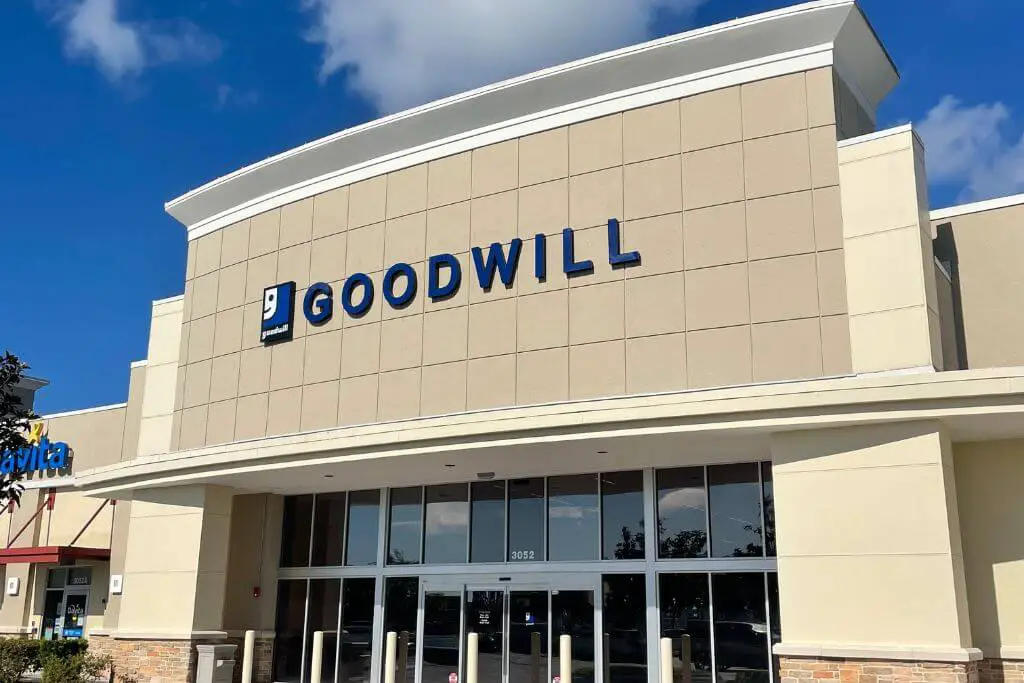Goodwill’s Financial Strains in Today’s Economic Climate
Goodwill Industries, long regarded as a cornerstone of charitable thrift retail in the United States, is confronting unprecedented challenges. Once synonymous with affordable second-hand shopping and purposeful employment for veterans, people with disabilities, and others facing barriers to work, the nonprofit now faces store closures, mass layoffs, and a fundamental need to reassess its operating model. Changing consumer behaviors, rising operating expenses, and the evolution of the retail landscape have converged to strain the organization’s traditional donation-resale pipeline. To remain viable—and true to its mission—Goodwill must innovate across fundraising, pricing, digital engagement, and community partnerships.
The Legacy of Goodwill’s Thrift Model
Since its founding more than a century ago, Goodwill’s success has hinged on three pillars:
-
Donation-Driven Inventory. Community members donate clothing, furniture, electronics, and household goods—items that might otherwise be discarded.
-
Affordable Pricing. These donated items are sold at low prices to serve budget-conscious shoppers.
-
Mission-Centered Employment. Proceeds fund job training and create employment for individuals with disabilities, veterans, and others facing employment barriers.
This virtuous cycle transformed Goodwill into a trusted social enterprise: donors declutter and support a cause, shoppers access bargains, and vulnerable populations secure dignified, purpose-driven work. For decades, this model flourished, enabling Goodwill to expand nationwide and support hundreds of thousands of employees.
Shifting Donation Patterns: The Rise of the Resale Economy
The Impact of Online Marketplaces
Over the past decade, peer-to-peer resale platforms—eBay, Poshmark, Depop, Facebook Marketplace, and others—have modernized the way people dispose of unwanted goods. Instead of donating, many choose to list items for sale, often commanding prices that exceed Goodwill’s thrift valuations. Key drivers include:
-
Financial Incentive. During the pandemic and ensuing economic uncertainty, households sought new income streams. Reselling became an attractive option to offset bills and generate supplemental revenue.
-
Ease of Use. Mobile apps and integrated shipping make listing an item, communicating with buyers, and completing transactions seamless.
As sellers migrate to these platforms, fewer donated items reach Goodwill donation bins. The resulting inventory shortfalls have led to empty shelves, sporadic product assortments, and diminished sales volume—directly eroding Goodwill’s revenue base.
Declining Generosity amid Economic Pressures
Economic stress affects not only supply but also the inclination to give. Donations—once viewed as a community responsibility—have declined as individuals prioritize essential spending and debt reduction. Charitable giving in the retail sector has not recovered to pre-recession levels, further constraining Goodwill’s ability to maintain a robust, diverse inventory.
Rising Operational Costs: Balancing Mission and Market Realities
Wage Pressures and Labor Costs
Goodwill’s mission compels it to pay living wages, particularly to employees who may have faced exclusion from mainstream labor markets. However, rising minimum wage laws in numerous jurisdictions have intensified labor costs. At the same time, Goodwill seeks to offer competitive benefits and training programs—an essential component of its social impact but also a significant budget item.
Overhead: Rent, Utilities, and Logistics
Operating a national network of retail stores requires substantial expenditures:
-
Retail Space. Rental rates, especially in urban and suburban markets, have escalated sharply.
-
Utilities. Electricity, heating, cooling, and water for large storefronts contribute materially to monthly expenses.
-
Transportation. Collecting, sorting, and distributing donated goods across distribution centers requires fuel, vehicle maintenance, and staff.
Collectively, these costs have outpaced revenue growth, forcing careful scrutiny of each store’s profitability and, in some cases, resulting in closures when locations fail to cover even basic overhead.
Pricing Dilemmas
To sustain operations, Goodwill has incrementally raised prices. Unfortunately, this undercuts its competitive advantage: thrift items at Goodwill are sometimes priced comparably—or higher—than fast-fashion imports or discount chain offerings. Consequently, price-sensitive shoppers may bypass Goodwill in favor of retailers that leverage global supply chains and economies of scale to keep sticker prices extremely low.
Human Consequences: Layoffs and Community Impact
Displaced Employees
Store closures nationwide—13 locations in California alone—have led to hundreds of layoffs. Many affected workers are individuals with disabilities, veterans, or those overcoming significant employment barriers. For these employees, Goodwill provided more than a paycheck; it represented:
-
A sense of purpose. Work assignments designed to leverage abilities and build confidence.
-
Community connection. Peer support from coworkers and training staff.
-
Skill development. On-the-job training that could translate to future opportunities.
Losing this support infrastructure jeopardizes not only financial stability but also psychological well-being, as displaced employees confront a labor market that often lacks comparable accommodations and training.
Broader Community Fallout
Goodwill’s downturn reverberates beyond laid-off staff:
-
Reduced social services funding. Goodwill reinvests surplus revenue into job training and placement programs. Declining store profits diminish program budgets.
-
Environmental impact. Thrift stores promote reuse and waste reduction. With fewer thrift options, usable goods may end up in landfills.
-
Local economies. Goodwill stores often anchor retail corridors, drawing foot traffic that benefits neighboring businesses.
The Nonprofit Retail Landscape: Trends and Challenges
Competition from Commercial Thrift and “Fast Thrift”
Retailers such as H&M, Zara, and Shein have launched “conscious” or “pre-owned” lines, mimicking thrift-style offerings at scale. These programs—often run at thin margins—capitalize on growing consumer interest in sustainability while leveraging sophisticated logistics, marketing, and brand power. Meanwhile, for-profit consignment and thrift chains (e.g., Buffalo Exchange) have expanded into new markets, further fragmenting the second-hand space.
Digital Disintermediation
Consumer demand for convenience has driven e-commerce across categories. Nonprofit retailers must contend with digital-first competitors that offer home delivery, curated selections, and rapid fulfillment—amenities that traditional brick-and-mortar thrift operations are only beginning to address.
Pathways to Resilience: Strategic Adaptation for Goodwill
To continue fulfilling its social mission, Goodwill must transform on multiple fronts:
1. Reinventing the Donation Proposition
-
Incentivized Giving. Implement rewards programs—points, coupons, or partner discounts—to encourage donations over resale.
-
Digital Donation Platforms. Integrate with reselling apps to offer donors hybrid options: list high-value items for sale or designate them as charitable contributions.
-
Targeted Drives. Launch mobile donation drives focused on seasonal needs or high-demand categories (e.g., winter coats, electronics).
2. Smart Pricing and Product Curation
-
Localized Pricing. Adjust price tiers based on neighborhood income levels and competitive analysis, ensuring affordability in cost-sensitive communities.
-
Premium Second-Hand. Establish “Goodwill Select” outlets or online boutiques featuring curated, high-quality, designer, or vintage items—sold at higher price points to subsidize core operations.
-
Dynamic Markdown Strategies. Utilize data analytics to optimize markdown schedules, balancing turnover rate with revenue goals.
3. Expanding Digital Commerce
-
E-Marketplace Development. Build a centralized online platform for shoppers to browse and purchase selected thrift inventory nationwide.
-
Partnerships with Established Platforms. Collaborate with eBay, Etsy, or Amazon to list higher-value donations, tapping into existing customer bases without the need to build full infrastructure.
-
Click-and-Collect. Enable online orders to be picked up at local stores, blending digital convenience with physical-store foot traffic.
4. Deepening Community and Corporate Partnerships
-
Local Collaboration. Partner with neighborhood nonprofits, workforce boards, and social service agencies to co-host job fairs, skills workshops, and community events inside Goodwill facilities.
-
Corporate Sponsorships. Seek underwriting from socially responsible corporations in exchange for branded donation bins, store signage, or sponsored training programs.
-
Educational Alliances. Connect with community colleges and vocational schools to offer certification programs on site, positioning Goodwill as a gateway to broader career pathways.
5. Enhancing Workforce Development
-
Customized Training Tracks. Develop modular curriculum—retail operations, customer service, digital literacy—aligned with local labor market needs.
-
Mentorship Programs. Pair employees with volunteer mentors from local businesses to foster professional networking and skill transfer.
-
Outcome Metrics. Track job placement and retention rates for program graduates, using data to continuously refine training offerings and demonstrate impact to funders.
Measuring Success: Key Performance Indicators
To gauge the effectiveness of these strategies, Goodwill should monitor:
-
Donation Volume. Number and total value of items received per month.
-
Sales per Square Foot. Revenue generated by each retail location, adjusted for overhead.
-
Online Conversion Rate. Percentage of website visitors who make a purchase.
-
Job Placement Metrics. Number of program participants obtaining long-term employment outside Goodwill.
-
Community Engagement. Attendance at events, number of partnerships formed, and volunteer hours contributed.
By instituting robust data-collection and analysis processes, Goodwill can pivot quickly—doubling down on successful initiatives and recalibrating underperforming ones.
Conclusion: Embracing Innovation While Honoring Mission
Goodwill’s century-old model of charitable thrift retail has served millions of Americans by reducing waste, offering low-cost goods, and empowering vulnerable workers. Yet, as donation streams diminish and operational costs rise, this esteemed nonprofit must evolve or risk further contraction. By reimagining donation incentives, embracing digital commerce, refining pricing strategies, and deepening community and corporate collaborations, Goodwill can restore inventory flows, stabilize revenues, and expand its social impact.
The path forward demands agility, data-driven decision-making, and a willingness to pilot new ideas. But at its core, Goodwill’s enduring mission remains unchanged: to transform donated goods into opportunity—both for shoppers seeking affordable essentials and for individuals seeking the dignity of work. With strategic reinvention, Goodwill can continue its legacy of innovation in charitable retail and reaffirm its role as a force for good in communities nationwide.

Adrian Hawthorne is a celebrated author and dedicated archivist who finds inspiration in the hidden stories of the past. Educated at Oxford, he now works at the National Archives, where preserving history fuels his evocative writing. Balancing archival precision with creative storytelling, Adrian founded the Hawthorne Institute of Literary Arts to mentor emerging writers and honor the timeless art of narrative.
